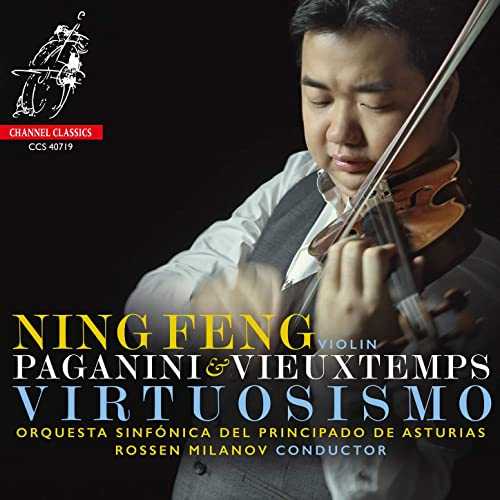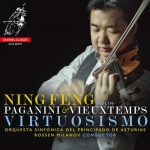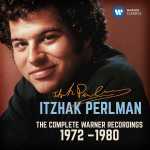
Composer: Niccolò Paganini, Henri Vieuxtemps
Performer: Ning Feng
Orchestra: Orquesta Sinfónica del Principado de Asturias
Conductor: Rossen Milanov
Format: DSD256 (dsf tracks)
Label: Channel Classics
Release: 2019
Size: 10.7 GB
Recovery: +3%
Scan: yes
Paganini: Violin Concerto No. 1 in D major, Op. 6
01. I. Allegro Maestoso – Tempo Giusto
02. II. Adagio
03. III. Rondo: Allegro Spirituoso – Un Poco Piu Presto
Vieuxtemps: Violin Concerto No. 4 in D, Op. 31
04. I. Andante – Moderato – Cadenza
05. II. Adagio Religioso
06. III. Scherzo: Vivace – Trio: Meno Mosso – Tempo I
07. IV. Finale Marziale: Andante – Allegro
Ning Feng, 1st Prize Winner of the Paganini Competition 2006, brings you Paganini’s Violin Concerto No. 1 and Vieuxtemps’ Violin Concerto No. 4 on his Stradivari ‘MacMillan’, 1721. ‘Virtuosismo’ is his second recording with OSPA – Orquesta Sinfónica del Principado de Asturias under the baton of conductor Rossen Milanov. The previous album ‘Apasionado‘ received excellent reviews.
Paganini, Violin Concerto No. 1
Paganini composed all his pieces for violin and orchestra for his own use, keeping them secretly stowed away. Consequently, most were published only after his death, and some not until recent decades. The first of his six violin concertos is a virtuosic tour de force, demonstrating not only his incredible technical command but also his great talent for melody and drama. It breathes the spirit of Rossini, whose operas were enormously popular at the time. Originally composed in the key of E flat major, Paganini tuned his violin a semitone up so that he could play in D major, as it were, and thus execute complicated double stops that are impossible in E flat while producing a brighter sound from his instrument. It was partly for this reason that contemporaries said the concerto was ‘unplayable’. Today the work is always performed in D major.Vieuxtemps, Violin Concerto No. 4
The next piece was written by the son of a weaver, amateur violinist and violin maker from Belgian Verviers named Henri Vieuxtemps (1820-1882). A child prodigy, he enjoyed an outstanding career as a violinist from the age of six, studying in Vienna and Paris (with Charles de Bériot) and touring Europe, Russia and the USA. From 1871 he was an influential teacher at the Brussels conservatory, where his pupils included Eugène Ysaÿe. But within two years, in 1873, a stroke caused lameness in his right arm, and Vieuxtemps was forced to withdraw from teaching. He spent his final years composing in a sanatorium in Algeria, where his daughter had settled with her husband. Vieuxtemps was greatly admired by contempories such as Berlioz and Paganini, whom he met in London. When Robert Schumann heard him in Leipzig in 1834, he described the fourteen-year-old’s playing as magical and compared him with Paganini. That was during a tour of Germany and Austria, when Vieuxtemps was accompanied by his father. After playing Beethoven’s Violin Concerto in Vienna, he decided to stay there for some time to study composition with Simon Sechter, under whom Anton Bruckner was later to study counterpoint. After his London debut in 1834, Vieuxtemps pursued his composition studies with Anton Reicha in Paris, the fruits of which are particularly evident in his First Violin Concerto, dating from 1836 (and later published as no. 2). The Fourth Violin Concerto in D minor opus 31, on this recording, was Vieuxtemps’ own favourite concerto. He composed it when employed as a court violinist in Saint Petersburg (1846-1851).



